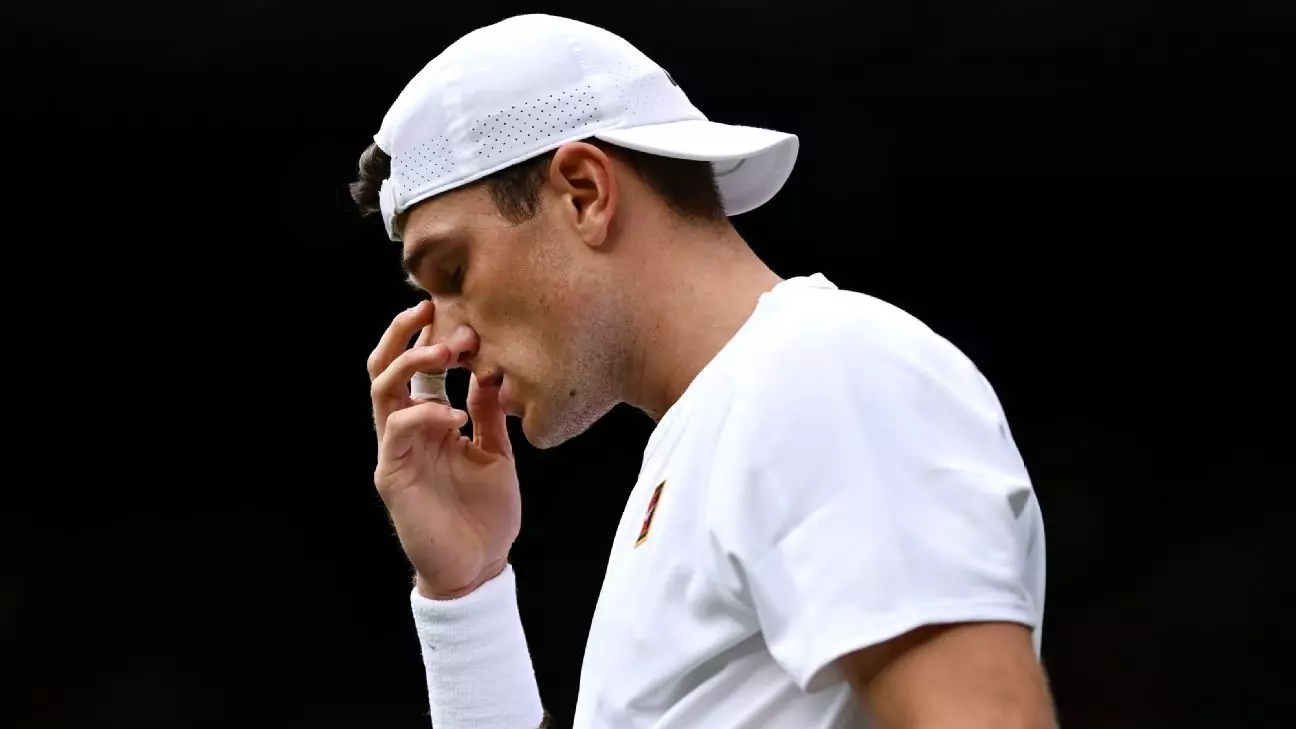Wimbledon, historically heralded as the most prestigious Grand Slam, continues to embody the essence of unpredictability in professional tennis. This year’s tournament vividly demonstrated that rankings and past performances can be rendered moot by the unique demands of grass courts. Marin Cilic’s victory over Jack Draper underscores this reality, highlighting how even the most favored contenders are vulnerable under the right conditions. While players like Draper hoped to leverage home advantage and momentum, the court revealed its merciless side, reminding us that success in tennis often hinges on adaptability and mental resilience rather than seeding or reputation.
This year’s tournament, with only 28 of the armed seeds surviving into the third round, reveals a softer structure that invites upsets and surprises. Such an environment intensifies the importance of every point, every serve, and every mental shift, emphasizing that perseverance often triumphs over raw rankings. Wimbledon’s grass, fast and unforgiving, favors aggressive play and quick thinking—a battlefield that can turn the tide of a match in seconds. In this context, no player can afford complacency, and even established champions are challenged anew, fostering an atmosphere where grit and determination are paramount.
The Significance of Cilic’s Comeback and its Inspirational Power
Marin Cilic’s recent return to Wimbledon after two years marked by injury and rehabilitation reflects the resilience increasingly celebrated in modern sports narratives. His recent victory, achieved against a rising star like Jack Draper, carries not just personal significance but also serves as an emblem of overcoming adversity. Cilic’s journey from knee surgeries and long periods of recovery underscores a vital lesson: perseverance fuels the ability to reclaim one’s place at the top. His mature performance, marked by fierce serving prowess and strategic shot-making, reaffirms that experience and mental toughness often eclipse youthful exuberance on grass courts.
Furthermore, Cilic’s emotional response after the match reveals that overcoming physical setbacks and doubts often becomes the ultimate triumph. His gratitude towards the crowd and the acknowledgment of the long road traveled resonate deeply with fans and aspiring players alike. His story adds an inspiring dimension to this year’s tournament, showing that setbacks are merely setups for comebacks when paired with unwavering resolve. It reminds us that in tennis, resilience isn’t just a trait but a necessity in an environment that demands continuous adaptation and mental fortitude.
The Local Hero Narrative and the Fragility of Home-Grown Hopes
British fans entered this Wimbledon with heightened expectations, banking on local players like Jack Draper to carry the flag. The narrative of home-grown talent is deeply ingrained in the tournament’s history, and Draper’s early promise ignited hopes of a historic British resurgence. For a nation that has long yearned for another home champion, the prospect of multiple Britons advancing deep into the draw was tantalizing. However, the sport’s ruthless reality quickly reasserted itself as Evans, Fery, and Pinnington Jones exited in quick succession, leaving Draper as the last torchbearer of national hopes.
Draper’s match against Cilic exposed the fine margins that define sports at this level. Despite rallying the crowd with powerful serves and moments of brilliance, the Brit’s inability to sustain those sparks proved costly. The match’s turning point encapsulated the inherent volatility of grass court tennis: a handful of critical errors, moments of hesitation, or lost concentration can unravel even the most promising efforts. His inability to extend his deep run underscores a harsh truth—young talent, no matter how promising, still must learn the art of resilience and mental durability in the face of seasoned opponents.
The disappointment felt by fans is palpable; however, it also acts as a reminder that the path to greatness is fraught with setbacks. In this unforgiving arena, persistence becomes the greatest asset. Draper’s journey does not end here, but this loss exemplifies the ongoing challenge young players face when stepping onto such revered stages. It’s a brutal lesson wrapped in the glory of Wimbledon’s history: resilience, patience, and relentless self-improvement are the true hallmarks of champions.
The 2023 Wimbledon is proving to be a tournament for the ages—not solely for its results but for the stories it weaves about resilience, unpredictability, and the human spirit. The victories and defeats, especially those like Cilic’s remarkable comeback, serve as compelling reminders that tennis remains one of the most demanding sports. It tests mental strength as fiercely as physical prowess, often rewarding those who refuse to give in despite insurmountable odds.
In the end, Wimbledon continues to challenge both its players and spectators to look beyond the rankings and historical legacies. It beckons us to appreciate the raw, often unpredictable beauty of sport—where resilience and heart can define a player’s legacy just as much as skill and talent. This tournament unapologetically celebrates the idea that true champions are forged not just in victory, but in their ability to confront adversity with unwavering resolve.

